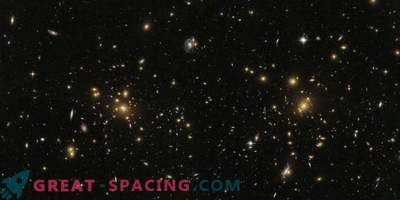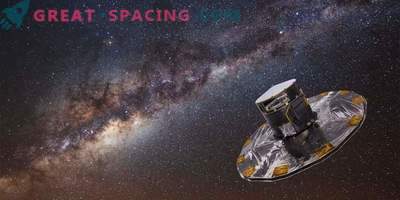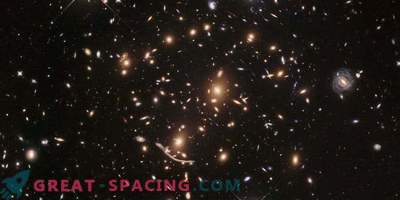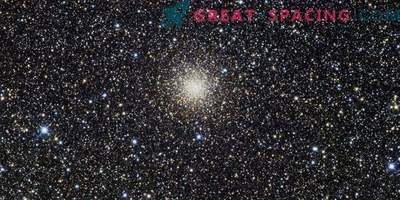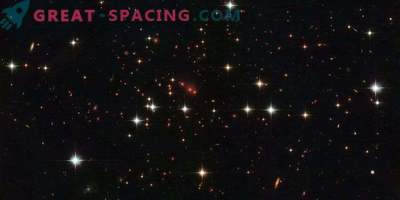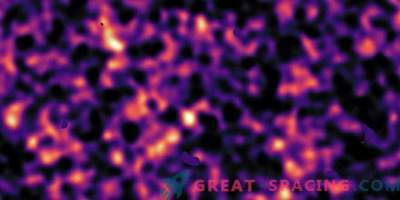
Astronomers managed to obtain new information about the massive galactic cluster PLCK G287.0 + 32.9. He was found in 2011 on the Planck telescope. The first surveys showed that this is an extremely huge cluster with a redshift of 0.39 and a mass index of 1.57 quadrillion solar. Early research also revealed a pair of giant radio-tracks.
Radio-relay - diffuse extended radio sources of synchrotron origin. Caught in the form of single or double symmetric arcs. They are believed to form during galactic collisions.
But the asymmetry in a particular case hints at a complicated strike scenario. To understand, it was necessary to distribute dark substances in high resolution. For this, the Subaru 8.2-meter telescope and the Hubble Space Telescope were used. This allowed us to obtain improved data. It turned out that the researchers identified 5 substructures. It also turned out that the PLCK G287.0 + 32.9 is much more massive - 2.04 quadrillion solar. Massively larger than the primary cluster, and three substructures occupy only 10%. The fifth is generally not considered a galactic cluster.
As a result, an analysis of the mass distribution showed 4 significant substructures extending from northwest to southeast.





